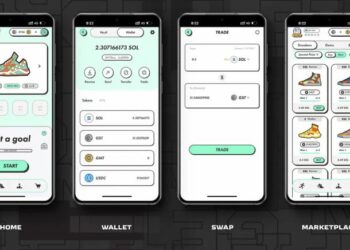In a show of force for Web3 gaming, Catizen’s CATI token has seen a 3.5-fold increase in consumption during the first quarter of 2025—equating to 30 million tokens used across its ever-expanding gaming ecosystem. Data from Bybit reveals that Catizen’s on-chain user base has now surpassed 3.3 million, with daily CATI usage occasionally topping the 1 million mark.
Three Key Drivers of Catizen’s Growth
Expansive Content Ecosystem
Catizen plans to release over 200 new games in 2025, spanning social, strategy, and casual genres. By creating what it calls a “game matrix effect,” the platform aims to encourage repeat engagement and boosts token utilization. Each additional game broadens CATI’s use cases—from in-game purchases to trading rare digital collectibles—driving higher daily token consumption.
Breakthrough in Asian Markets
A focal point of Catizen’s expansion is Asia, particularly in culturally influential regions like Japan, Korea, Taiwan, and Southeast Asia. This strategic approach offers access to a potential audience of one billion users. Many players from these markets are encountering blockchain technology for the first time through Catizen, highlighting the platform’s potential appeal to a mass audience.
Forward-Looking Technological Roadmap
Catizen is ramping up its AI integration, notably with “AI Cat” companions that make gaming feel more personal and emotionally engaging. By weaving together user-generated content, blockchain validation, and emotional AI interactions, the platform aims to elevate its entertainment experience well beyond standard gameplay.

Source Catizen
Building a Game Matrix
Central to Catizen’s roadmap is the concept of a “game matrix effect,” wherein each title feeds into a larger shared ecosystem. The planned release of 200 new games in 2025 is a bold move designed to keep the community engaged while introducing new avenues for CATI token usage. As the network of titles grows, so does the potential for players to deepen their involvement, whether through strategic in-game decision-making, peer-to-peer trading, or simply enjoying social experiences with friends.
Tim Wong, Chairman of the Catizen Foundation, believes these titles will create a continual demand for CATI. He points to Cattea, a developing trading-oriented game, as an example of how each new release could spur “tens of millions of token burns.” According to Wong, this approach is part of a virtuous cycle in which gameplay fuels token demand, incentivizing developers to create more content.
Aiming to Be Web3’s Mini-App Platform
Catizen’s ambitions do not end with a diverse gaming slate. Inspired by WeChat’s “light app, heavy ecosystem” philosophy, the project aims to become a comprehensive Web3 mini-app platform. On the developer side, Catizen plans to provide an SDK for Web2-to-Web3 migration, lowering the barrier for studios unfamiliar with blockchain tech.
For users, creating a unified digital identity aims to enable travel among various titles, ensuring that in-game assets remain functional and tradable across the entire network.
Moreover, the planned multimillion-dollar creator fund will nurture content developers, community builders, and artists who can further enrich the platform. Catizen CEO David points to a 30% discount on in-game items purchased with CATI—far more attractive than discounts in USDT—as one factor driving the token’s surge. Yet, he insists this is only the tip of the iceberg, hinting at a 200 million token consumption goal that could be achieved through sustained content releases and player engagement.
A Tipping Point for Web3 Entertainment
Around 60% of its 3.3 million users are traditional gamers experiencing blockchain for the first time—a statistic that bodes well for widespread adoption.
As AI features continue to mature and the user base expands deeper into Asia, Catizen is on track to become the first Web3 application to surpass 10 million daily active users. Should it meet this benchmark, Catizen could pave the way for a new generation of entertainment platforms where true ownership, robust communities, and cutting-edge tech converge to reshape digital experiences worldwide.
In a show of force for Web3 gaming, Catizen’s CATI token has seen a 3.5-fold increase in consumption during the first quarter of 2025—equating to 30 million tokens used across its ever-expanding gaming ecosystem. Data from Bybit reveals that Catizen’s on-chain user base has now surpassed 3.3 million, with daily CATI usage occasionally topping the 1 million mark.
Three Key Drivers of Catizen’s Growth
Expansive Content Ecosystem
Catizen plans to release over 200 new games in 2025, spanning social, strategy, and casual genres. By creating what it calls a “game matrix effect,” the platform aims to encourage repeat engagement and boosts token utilization. Each additional game broadens CATI’s use cases—from in-game purchases to trading rare digital collectibles—driving higher daily token consumption.
Breakthrough in Asian Markets
A focal point of Catizen’s expansion is Asia, particularly in culturally influential regions like Japan, Korea, Taiwan, and Southeast Asia. This strategic approach offers access to a potential audience of one billion users. Many players from these markets are encountering blockchain technology for the first time through Catizen, highlighting the platform’s potential appeal to a mass audience.
Forward-Looking Technological Roadmap
Catizen is ramping up its AI integration, notably with “AI Cat” companions that make gaming feel more personal and emotionally engaging. By weaving together user-generated content, blockchain validation, and emotional AI interactions, the platform aims to elevate its entertainment experience well beyond standard gameplay.

Source Catizen
Building a Game Matrix
Central to Catizen’s roadmap is the concept of a “game matrix effect,” wherein each title feeds into a larger shared ecosystem. The planned release of 200 new games in 2025 is a bold move designed to keep the community engaged while introducing new avenues for CATI token usage. As the network of titles grows, so does the potential for players to deepen their involvement, whether through strategic in-game decision-making, peer-to-peer trading, or simply enjoying social experiences with friends.
Tim Wong, Chairman of the Catizen Foundation, believes these titles will create a continual demand for CATI. He points to Cattea, a developing trading-oriented game, as an example of how each new release could spur “tens of millions of token burns.” According to Wong, this approach is part of a virtuous cycle in which gameplay fuels token demand, incentivizing developers to create more content.
Aiming to Be Web3’s Mini-App Platform
Catizen’s ambitions do not end with a diverse gaming slate. Inspired by WeChat’s “light app, heavy ecosystem” philosophy, the project aims to become a comprehensive Web3 mini-app platform. On the developer side, Catizen plans to provide an SDK for Web2-to-Web3 migration, lowering the barrier for studios unfamiliar with blockchain tech.
For users, creating a unified digital identity aims to enable travel among various titles, ensuring that in-game assets remain functional and tradable across the entire network.
Moreover, the planned multimillion-dollar creator fund will nurture content developers, community builders, and artists who can further enrich the platform. Catizen CEO David points to a 30% discount on in-game items purchased with CATI—far more attractive than discounts in USDT—as one factor driving the token’s surge. Yet, he insists this is only the tip of the iceberg, hinting at a 200 million token consumption goal that could be achieved through sustained content releases and player engagement.
A Tipping Point for Web3 Entertainment
Around 60% of its 3.3 million users are traditional gamers experiencing blockchain for the first time—a statistic that bodes well for widespread adoption.
As AI features continue to mature and the user base expands deeper into Asia, Catizen is on track to become the first Web3 application to surpass 10 million daily active users. Should it meet this benchmark, Catizen could pave the way for a new generation of entertainment platforms where true ownership, robust communities, and cutting-edge tech converge to reshape digital experiences worldwide.























































![What Is Asset Tokenization? Types, Why It Matters Now [2025]](https://coininsights.com/wp-content/uploads/2025/05/asset_tokenization-360x180.png)





























where to get clomiphene without prescription can i purchase clomid without insurance how to buy cheap clomid no prescription can i order cheap clomid without insurance where can i get cheap clomiphene tablets cheap clomid pills where can i buy generic clomiphene no prescription
Good blog you be undergoing here.. It’s intricate to assign great status script like yours these days. I truly comprehend individuals like you! Take vigilance!!
This is the kind of delivery I turn up helpful.
buy azithromycin for sale – ciprofloxacin 500 mg cheap metronidazole 400mg pills
order rybelsus 14mg sale – rybelsus 14mg price periactin 4 mg generic
purchase motilium online – buy generic motilium online where can i buy cyclobenzaprine
buy inderal 10mg without prescription – buy inderal pills for sale methotrexate 5mg oral